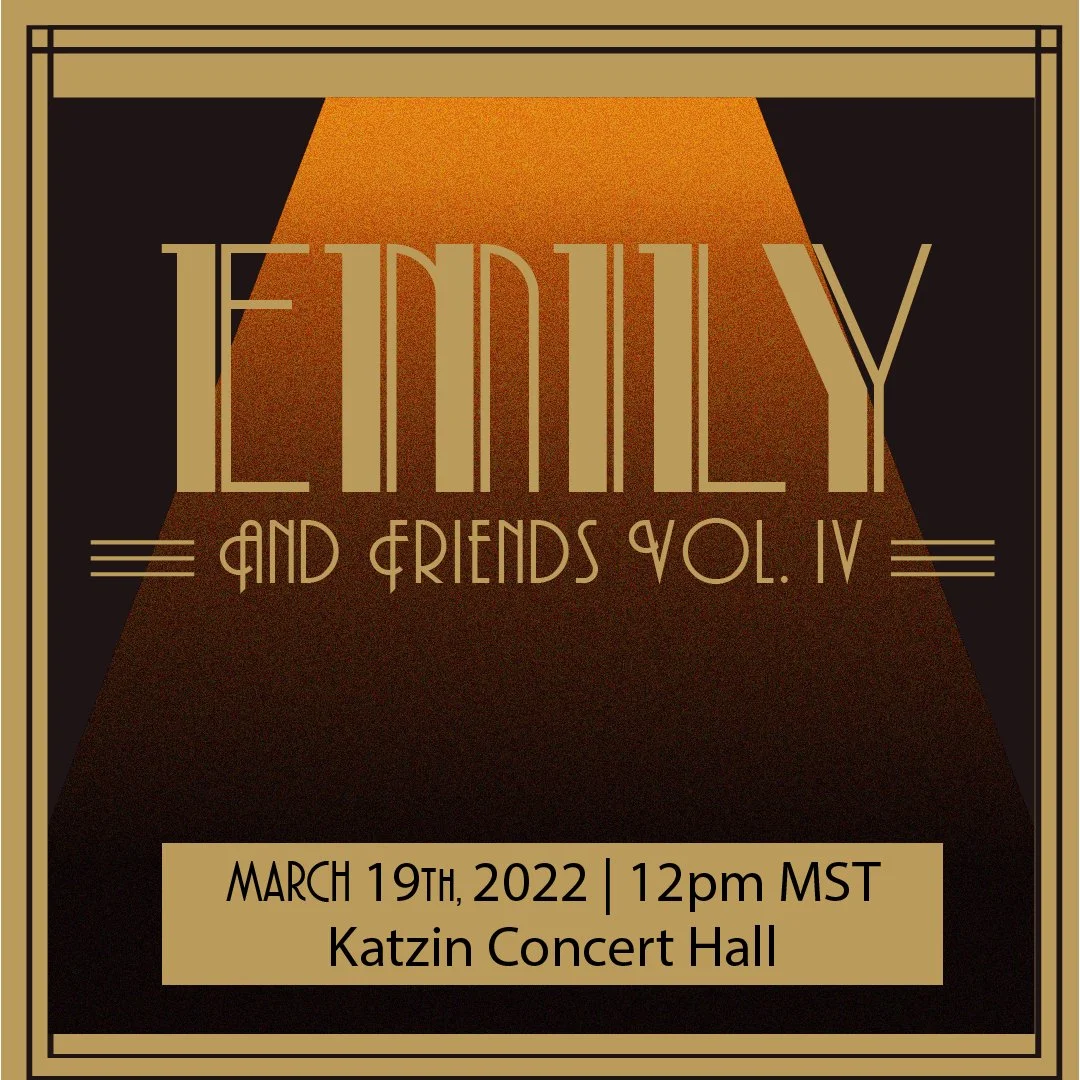Program
-
Allegro
Adagio molto espressivo
Allegro molto
Allegro ma non troppo
Laurana Roderer, Violin
-
Of politicians
Of Attorneys
Of Business Men
Of the Media
Of Critics and Music
Of Virtue
Of Vanity
Of Celebration
Jacob Verhine, Tenor
Michelle Fletcher, Bassoon
-
10 Minutes
-
Inhale/Exhale
Life on a string
Letting go
Michelle Fletcher, Bassoon
Tiffany Pan, Oboe
Program Notes
Sonata for violin and piano, Op.24, No. 5
Beethoven had a great love of nature and was particularly happy and inspired when in the forest or walking along a river. For him, the presence of God was reinforced by the beauty of nature. This gentle side contrasts with the well-known characteristics of extreme dynamic tension and raw emotion in much of Beethoven’s music, but it is found throughout his works and is an important element in understanding the composer’s complex personality.
The ‘Spring’ sonata, Op. 24, is the fifth of Beethoven’s ten sonatas for piano and violin. Composed between 1800 and 1801, it was dedicated, along with the Sonata in A minor Op. 23 to one of Beethoven’s most generous Viennese patrons, Count Moritz von Fries. Both sonatas were originally intended to be paired as Op. 23, Nos. 1 and 2, respectively, but through the fault of the engraver, the ‘Spring’ sonata became Opus 24. Its moniker was not given by Beethoven, but was given after the composer’s death.
One of the most popular of Beethoven’s sonatas for piano and violin, the work is easily remembered, even after first hearing. The music is full of joy, and it’s refreshing, hopeful quality makes the subtitle, ‘Spring,’ very appropriate. Throughout, the melodies are immediate, simple, and elegant. There are also humorous moments, reminding listeners that Beethoven was a master of fun and games as well.
‘Spring’ is one of only three of Beethoven’s piano and violin sonatas to be cast in four movements. It opens with one of the most unforgettable melodies of all time played in F Major by the violin. The second theme which follows is more rhythmic and energetic, and the movement develops around the two contrasting themes. The slow movement in B-flat Major speaks simply and flowingly, with violin and piano alternating in presenting the theme in slightly different variations. The third movement, a scherzo and trio, is like a game of tag in which the violin and the piano bounce off each other. The coquettish impression is strengthened by the rhythmic playfulness. The finale is in rondo form, with a lyrical theme followed by three episodes. Lighthearted and spontaneous, its dotted rhythms exemplify Beethoven’s inventiveness and sense of humor.
The Devil’s Songbook
Roger Vogel studied music theory and composition at Ohio State University and earned his Ph.D in 1975. In 1976, he joined the faculty at the University of Georgia in Athens, Georgia, until his retirement in 2012. Dr. Vogel has composed over 160 compositions, including chamber works, vocal music, and solo piano. His works have received several awards, including prizes from the National Flute Association and the University of Georgia Albert Christ Janer Award.
This piece was written for his friend and bassoonist Bruce Gbur to play on his DMA recital. Looking for inspiration, Vogel went to the library and came across The Devil’s Book of Verse by Richard Conniff, a witty collection of poetry with proverbs and verses on a variety of subjects. Vogel chose to set humorous and satirical texts from the book, and aptly named the song cycle The Devil’s Songbook. William Shakespeare, Mark Twain, and Dorothy Parker are some of the notable writers Vogel chose to feature in his composition.
Up And Away
Alyssa Morris graduated from Brigham Young University in oboe performance and studied with Dr. Geralyn Giovannetti. Alyssa began composing from an early age, and has published several works for chamber and orchestra. She has composed many commissioned pieces for BYU, including Up and Away for the Sundance Trio. Below are Alyssa’s program notes found in the forward of the score:
Up and Away is a musical depiction of the life of Balloon. Little Balloon is brought to life, with effervescence, lightheartedness, and wonder. Inhale/Exhale is a depiction of blowing up the balloon, watching it float, letting air out of Balloon and hearing the little squeal and sputter as it flies around the room. This movement also introduces Balloon’s “light-motif” (ha ha). This theme can be heard in bars 4 to 13. Listen for the “light” motif again in bars 34-40, a diminution of the motif at bars 80, 83, and 85, and then in its full form at the end.
Movement 2, Life on a String is about teenage angst and rebellion. Little Balloon is not so little anymore, and wants to prove that it has a mind and ideas of its own. So many times Balloon has felt that people want it to fit a certain mold. But Balloon just wants to be itself. This angst can be heard as each instrument quotes a passage that has become synonymous with what most people think that instrument is. The oboe plays the snake charmer, the bassoon plays one of its common orchestral excerpts from Tchaikovsky’s 4th Symphony, and the piano plays Fur Elise: but not without some significant changes to prove that they are no a pawn in this game, but an individual! The “light” motif can once again be heard in bars 33-36, and bars 78-81.
Movement 3, Letting Go, portrays the wisdom that comes with old age. This movement is Balloon’s reflection at a life full of happiness, sorrow, love, learning, and meaning. Letting Go is a quiet resignation, knowing that we are not always in control of what happens in life. However, we are in control of what we choose to do with what we have been given. The “light” motif can be heard once more throughout after bar 30.
It is my hope that the listener will find some of themselves in the Balloon; in the joy, frustration, lightheartedness, loneliness, wisdom and hope.




